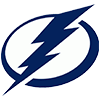We're at the point in the summer in which many fantasy managers shift their focus from fantasy baseball to football. However, for those who hope to either make a big move up the standings or maintain their league leads across the next few months, this is a crucial time period. In an effort to fill in for the excellent work that Erik has done in this space all season, I've tried to categorize players within each of the riser and faller categories. We'll talk about the trajectory of players who have recently returned from injury, players who have gained and lost skills within the last month, and touch on everyone's favorite topic – closers.
Risers
Bouncing Back from Injury
Yoan Moncada, White Sox: Perhaps no team has been more frustrating than the White Sox this season. They've been crushed by injury luck, which has only accentuated some of the flaws in the way their roster has been built. Eloy Jimenez, Yasmani Grandal and Lance Lynn are among the players who missed significant portions of the first half, though Moncada was arguably the most frustrating player of the group. In addition to two trips to the injured list with separate injuries, Moncada has also been day-to-day on several occasions throughout the season with bumps and bruises that have cost him playing time.
Even worse, when Moncada has been on the field he's been dreadful, as indicated by his 71 wRC+ and .286 wOBA. That begs the question of why
We're at the point in the summer in which many fantasy managers shift their focus from fantasy baseball to football. However, for those who hope to either make a big move up the standings or maintain their league leads across the next few months, this is a crucial time period. In an effort to fill in for the excellent work that Erik has done in this space all season, I've tried to categorize players within each of the riser and faller categories. We'll talk about the trajectory of players who have recently returned from injury, players who have gained and lost skills within the last month, and touch on everyone's favorite topic – closers.
Risers
Bouncing Back from Injury
Yoan Moncada, White Sox: Perhaps no team has been more frustrating than the White Sox this season. They've been crushed by injury luck, which has only accentuated some of the flaws in the way their roster has been built. Eloy Jimenez, Yasmani Grandal and Lance Lynn are among the players who missed significant portions of the first half, though Moncada was arguably the most frustrating player of the group. In addition to two trips to the injured list with separate injuries, Moncada has also been day-to-day on several occasions throughout the season with bumps and bruises that have cost him playing time.
Even worse, when Moncada has been on the field he's been dreadful, as indicated by his 71 wRC+ and .286 wOBA. That begs the question of why exactly Moncada is found in the risers section of this article. For one, he's been available. Since being activated from the injured list on June 28, Moncada has been in the lineup for 21 of 23 games. In that span, he's hitting a respectable .253/.311/.398 with two home runs, 14 RBI and 13 runs scored. That's not fantasy-MVP material, but it's significant improvement compared to his production across the first three months of the season. Breaking down that sample to an even smaller span of time, Moncada has recorded five extra-base hits in his last six games. The combination of his performance and availability across the last month suggests that Moncada is healthy, perhaps for the first time this season. Expect a significantly better second half.
Kris Bryant, Rockies: We can copy and paste several sentences from the description of Moncada's first half of the season to describe Bryant's initial campaign in Colorado. Unlike Moncada, Bryant has consistently performed well when he's remained on the field.
There are a few reasons to believe Bryant is in for big post-All-Star break production. First, he's struck out only a 7.6 percent clip in that span, as compared to an 8.9 percent walk rate. Bryant has also done the majority of his damage on the road, in contrast to nearly every other hitter on the Rockies' roster. The hope would be that he gets the Coors bump at some point, while also maintaining his production on the road. That would provide a relatively stable level of production that very few hitters have been able to maintain with the Rockies.
Emerging Starers
Braxton Garrett, Marlins: Garrett has been a consistent member of the Marlins' rotation since early June. He had unremarkable results through his first five starts, initially being held back by a pitch count – he didn't surpass 83 pitches in any of his first three appearances – and uninspiring results (5.24 ERA, 1.70 WHIP). Even through that stretch, Garrett showed the ability to miss bats by inducing a 12.5 swinging-strike rate, which put him on par with the likes of Luis Severino, Luis Castillo and Zack Wheeler as well as several other elite pitchers.
Since the calendar has flipped to July, we've seen his skills translate to results. Garrett has worked at least 5.2 innings in each of his four starts this month while maintaining a 1.80 ERA and 0.64 WHIP with a 27.5 K percentage and 22 K-BB percentage. There will be some pullback on those numbers, and it's worth noting that Garrett's last two starts have come against the Pirates, and a third in that span came against the Nationals. But, there's been an undeniable step forward.
The bigger issue is Garrett's fit and role on the big-league club. Jesus Luzardo and Edward Cabrera both appear to be on the cusp of activation from the injured list. Even with the unfortunate injury to Max Meyer, the team would be forced to go to a six-man rotation – or bump either Cabrera or Trevor Rogers to Triple-A Jacksonville or the bullpen – for Garrett to keep a consistent spot in the rotation. That's where the trade deadline comes into play. In the team's last seven games (through Sunday), the Marlins have scored zero runs four times and one run in an additional matchup. Rumblings have grown louder from reporters that the Marlins will be open to moving a pitcher for some added thump in the lineup. That could be enough to ensure Garrett has a rotation spot through the end of the campaign.
Brady Singer, Royals: This one is pretty simple. Singer has a 28.7 percent strikeout rate and 3.09 ERA across his last five starts. I resisted writing him up in this article primarily because there isn't an apparent reason for his upswing in results. His pitch mix and velocity have remained nearly identical to the first few months of the season, and his walk rate has actually jumped significantly. Despite that, he's managed to suppress quality of contact extremely well. Through his first seven starts of the season, Singer allowed a 12 percent barrel rate. In his five most recent outings, that number has dipped to five percent. That's a fairly flimsy change to rely on, and it could be gone as quickly as it appeared. I'd much rather be able to point to a definitive change in profile to signal my faith in a player and recommend him to others. Due to Singer's pedigree, it seems worth it to note that something seems to have clicked and perhaps he's ready for a breakout second half of the season.
Locking Down the Closer Role
Ryan Pressly, Astros: Pressly had a number of shaky moments early this season, beginning in April when he experienced decreased velocity prior to hitting the injured list with a knee injury. Since returning, he's mostly gotten the job done in save situations apart from a four-run blowup against the Yankees on June 23. However, his skills weren't particularly reassuring. His velocity remained over a full tick below his career norms, and from May 5 to June 30 he struck out less than a batter per inning. While there weren't indications of change coming to the closer role in Houston, the situation seemed to be one worth monitoring.
Pressly has used July to slam the door shut on any doubt that he is the Astros' closer. Not only has he not allowed an earned run across his last nine appearances, he's maintained a 17:0 K:BB and has not allowed a baserunner in his last 10 innings.
Fallers
Injury
Jonathan India, Reds: India has had a frustrating season from an injury perspective. He was forced to miss a month and a half with a hamstring injury and has since been day-to-day on several occasions with random knocks. Most recently, he was out of Sunday's lineup due to a thigh contusion that occurred on a head-first slide on Saturday. Hopefully, that won't cause another stint on the injured list, as India did show signs of turning things around from a performance perspective. He's homered three times in his last nine games, while posting a .273 batting average and .368 on-base percentage – numbers that are reminiscent of his Rookie of the Year performance in 2021, but have largely been lacking in his 178 plate appearances this season.
It's hard, and perhaps harsh, to judge India from a skills perspective given the aforementioned injuries he's been forced to deal with this season, yet there's no way around the fact that his batted-ball profile has not been inspiring (3.4 barrel rate, 85 mph average exit velocity). This commentary isn't meant to rule out the possibility that India has a big second half, though based on both his skills and availability in the first four months of the season, he projects to be a polarizing player during the 2023 draft season after looking like a locked-in second baseman entering 2022.
Tim Anderson, White Sox: Since returning from a groin injury June 20, Anderson has just a .289 slugging percentage with one homer. While the slow stretch has largely just pushed his season-long numbers back in line with his career norms, Anderson's power production has notably fallen from past seasons as he has just a .102 ISO. Put another way, in the shortened 2020 season, Anderson managed 22 extra-base hits in 208 plate appearances, but he has recorded just 17 extra-base hits in 284 plate appearances this season.
At the same time, it's still important to note the ways Anderson has remained a very useful fantasy contributor. Notably, he is still an excellent source of batting average, runs scored as well as a solid source of stolen bases. That saves Anderson from being a "league-loser," but the $13 reflected in his earned auction value this season puts him 18th at shortstop -- well below his ADP.
Poor performance
Nick Pivetta, Red Sox: For anyone who has played fantasy baseball for multiple seasons, Nick Pivetta's run of extremes shouldn't come as a surprise. Across a 13-game stretch from April 26 to June 29, Pivetta allowed 21 earned runs across 83 innings. In three starts since, he's undone all of that positive work by coughing up 20 earned runs in 13.1 innings. If this were a pitcher with a lengthy track record of success, I'd suggest staying the course and being patient while waiting for the results to level out. However, Pivetta has a 5.06 career ERA. It's giving into narrative a bit, but Pivetta is who we thought he was.
Jameson Taillon, Yankees: Taillon is also in the midst of a rough stretch. In seven starts from June 7 to July 10, Taillon has a 6.81 ERA and 1.63 WHIP. There is a pretty clear explanation for Taillon's struggles, as his flyball rate has spiked and he's allowed 2.8 HR/9 in July as a result. His fastball appears to be the primary issue. He has increased his usage of the pitch despite hitters teeing off against it (.424 wOBA in July). The downturn has also been reflected in pitch value, which sits at -1.2 after a mark of 12.3 in 2021. Taillon is likely to revert back to a useful pitcher, but his potential production currently doesn't match the ratio damage he can do to fantasy teams.
At risk to lose saves
Taylor Rogers, Padres: Rogers is a tricky player and situation to assess. He was dominant to begin the season but has just 11 clean outings across his last 20 appearances. For most closers, that would be enough to heavily question the potential for future saves, but the situation in San Diego is unique for a few different reasons. First, Rogers has maintained excellent skills, including a 22:4 K:BB and 0.5 HR/9 across his last 19.1 innings. The team has also given no indication that they are considering a change, likely because Rogers will need to be relied upon in a high-leverage role regardless of whether he has the closer label or not due to the level to which the bullpen has been depleted by injury. On the other hand, Rogers' struggles could cause the team to look to bolster the bullpen with an outside addition within the next week. Monitor this situation closely.
David Robertson, Cubs: Robertson is almost certain to be a victim of his own success. He's been excellent all season in the closer role for the Cubs, which makes him among the most obvious trade candidates. It's possible that he retains the closer role with his new team, but now is the time for teams that have been reliant on Robertson to identify a different source of saves.




































